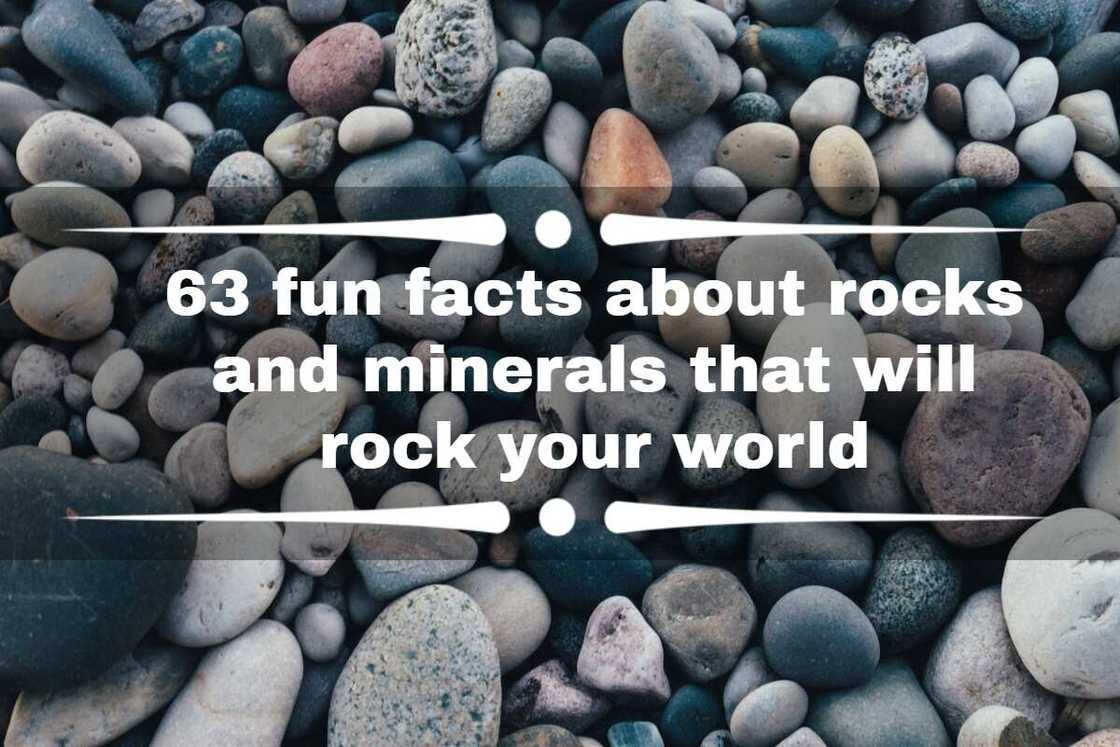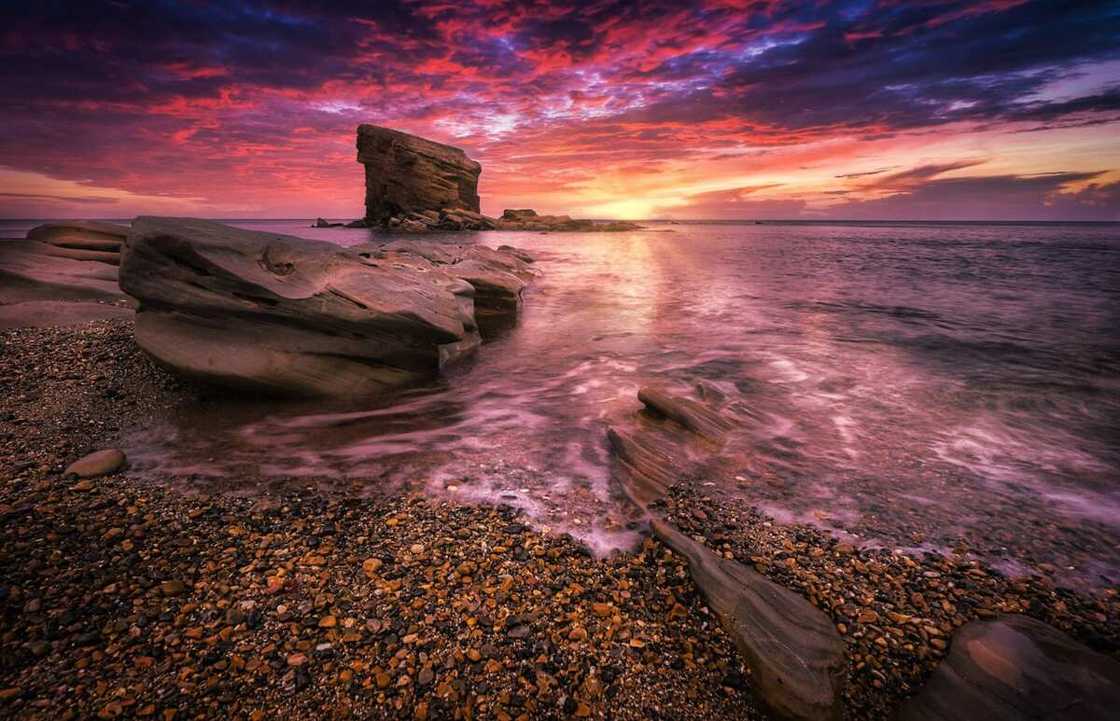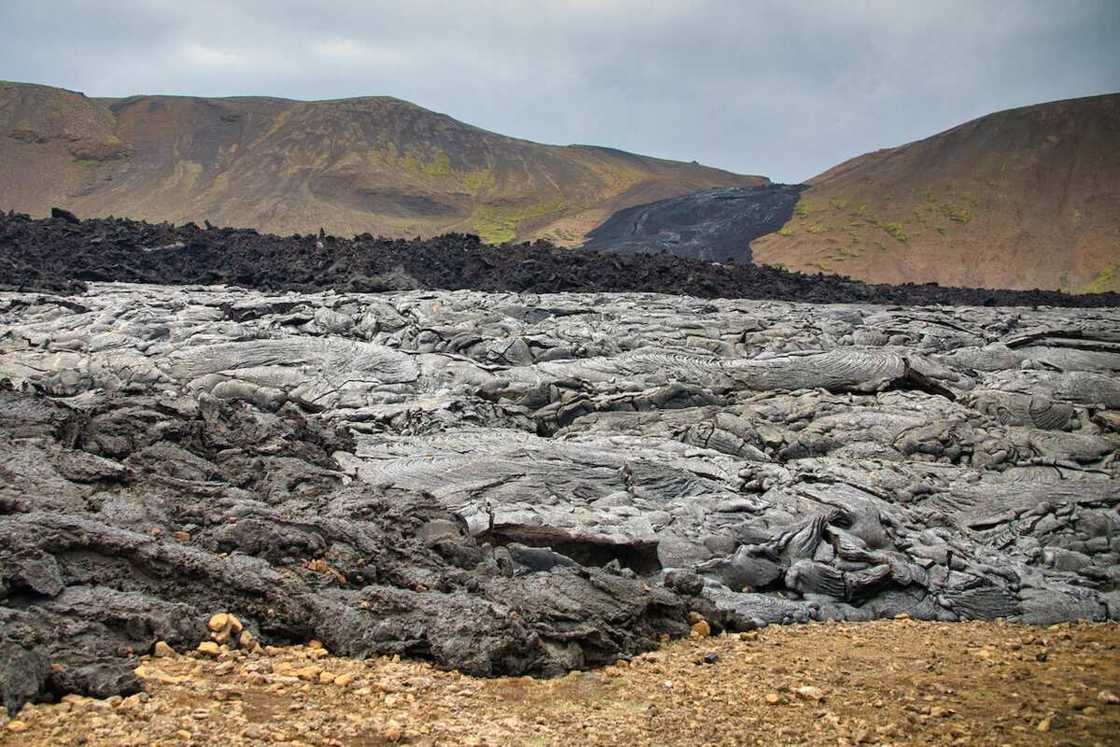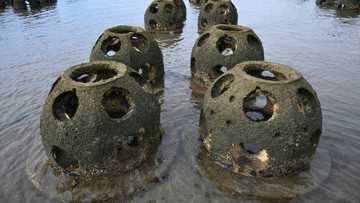63 fun facts about rocks and minerals that will rock your world
What facts about rocks do you know? Even though rocks and minerals are abundantly available, many people do not take an interest in them, yet there is a lot to learn about them. Moreover, they are one of the most utilised natural resources.

Source: UGC
Rocks are made of one or multiple minerals and are the basic unit from which the solid earth is formed. If you are curious to learn more about rocks, these facts about rocks will fascinate you while also improving your knowledge of the subject.
Fun facts about rocks and minerals
Rocks are unique since they have different formation processes, colours, shapes, sizes, and ages. There are three types of rocks categorised by their formation processes. Here is what you should know about rocks, including rock cycle facts.
- The major construction material of the Pyramid of Giza in Egypt is limestone, a sedimentary rock.
- Electronics such as radios and watches are made using Quartz. Quartz maintains an accurate frequency standard, making it desirable for use in electronics.
- Sand is one of the raw materials used in making glass. It is combined with other materials, heated at high temperatures, and forms glass when it cools.
- Gold, one of the most precious metals in the world, is underexploited. It is estimated that 80% of gold has not been discovered.
- Minerals are pure inorganic substances, and that makes pure metals to be minerals.
- The most expensive mineral is Jadeite. One carat of the mineral can fetch up to $3 million.
- The Sandstone in the Sothern Alps of New Zealand is the fastest eroding rock. It erodes at the rate of 2.5 millimetres per year.

Source: UGC
- Painite is the rarest mineral on earth. It was discovered in 1951, and there are only two dozen of the mineral.
- Rocks can be used to estimate how old the earth is. Scientists have estimated that the earth could be 4.54 billion years old.
- Pumice is the lightest rock on earth. Due to the rock’s porous structure, it floats on water.
- Shale is the most abundant sedimentary rock. It is about 70% of sedimentary rocks on earth.
- Rocks form some breathtaking landmarks on earth. Some of the notable ones include Balancing rock (Canada), Old Harry rocks (Cyprus), Aphrodite’s rocks (England), Uluru aka Ayers Rock (Australia), and Horseshoe Bend (Arizona, USA).
- The hardness of a mineral is measured using the Mohs mineral hardness scale. The device was invented by German mineralogist freidrich Mohs.
- Humans consider gemstones highly valuable due to their scarcity, beauty, and durability. They are about 100.
- Minerals from rocks are used to make some of the things you use at home. For instance, toothpaste, soap, battery, and some makeup are made from rock minerals.
- A gemstone’s weight is measured in carats. One carat is approximately 0.2 grams.
Fun rock facts for kids
Kids are playful; sometimes, small rocks form part of their playing materials. They are always inquisitive and want to know more about the rocks. These fun rock facts will impress them.

Source: UGC
- The scientific study of rocks is known as geology.
- There are three types of rocks, sedimentary, metamorphic, and igneous.
- Rocks are made up of minerals, while minerals are made up of chemicals found in the earth.
- Magma is molten rock below the earth's surface. It becomes lava when it comes to the earth's surface and when it cools, it forms rocks.
- Rocks are formed from volcanic activities, deposition of sediments, and subjection to mechanical force or heating.
- The most common rock on earth is sedimentary rock. It forms about 66% of the earth’s surface.
- Meteorites are space rocks that fall on the earth. In most cases, they fall into the ocean.
- Rocks were the first tools used by humans, and today, they are an important material in building construction.
- Rocks continuously transform, changing from one type to another. The changes occur naturally in the presence of heat and pressure.
- Some rocks have weird shapes m, resulting in myths about them. For instance, snakestones were once thought to be the remains of coiled snakes that became stone.
- More than four thousand minerals exist, but only 30 of them are abundantly available on earth.
Facts about sedimentary rocks
These rocks result from accumulating mineral and organic particles on the earth's surface. The particles are then compacted during the cementation process. Below are facts about sedimentary rocks worth knowing.

Source: UGC
- The organic and mineral particles that form sedimentary rocks are called sediment.
- Sedimentary rocks are on the planet Mars.
- They constitute 8% of the earth’s crust.
- The colour of sedimentary rock may be reddish-brown or greyish-green depending on oxygen availability for oxidation.
- Minerals found in sedimentary rocks are Quartz and Calcite.
- Of all the main rocks, it has the least deposit of major minerals.
- During sedimentation, the rock forms layers called beds or strata.
- The structures formed during deposition are called primary structures, while those that form after deposition are called secondary structures.
- A depositional environment is where sedimentary rock forms, and each environment has unique characteristics.
- A sedimentary basin is a place where massive sedimentation takes place.
- The rate of deposition of sediments varies in every formation of sedimentary rocks. Normal sedimentation is slower than catastrophic sedimentation.
Facts about metamorphic rocks
Their name is derived from metamorphosis, meaning change of form. The original forms of the rock are subjected to high heat or pressure. Below are facts you ought to know about the rocks.

Source: UGC
- An original that has not been metamorphosed is called a protolith. It can be a sedimentary, igneous, or existing metamorphic rock.
- Metamorphic rocks are classified into two groups, foliated and non-foliated rocks.
- Foliated metamorphic rocks are formed when a rock with elongated mineral deposits is under high pressure, making the minerals align to the direction of the pressure.
- Igneous rock such as granite can undergo the process, forming igneous gneiss.
- Non-foliated metamorphic also form under high-pressure exertion, but the rocks do not have mineral deposits hence mineral alignment or layering.
- Heat and pressure can also transform sedimentary rocks such as bituminous coal, sandstone, and limestone to non-foliated metamorphic rocks like marble, quartzite, and anthracite coal.
- To form metamorphic rock, a rock should be subjected to a temperature of at least 200 degrees Celsius and pressure of not less than 100 megapascals.
- Examples of metamorphic rocks are Gneiss, Slate, Schist, Marble, and Quartzite. Some rocks, such as Slate and Quartzite, are used for construction.
- Some minerals in metamorphic rocks include Micas, Kyanite, Pyroxenes, Sillimanite, Olivines, and Garnet.
- They form 12% of the earth’s surface.
Facts about igneous rocks
The word igneous comes from the Latin phrase "formed from fire". Therefore, igneous rocks are made from solidified magma and lava from the earth’s volcanic activities. Here are fascinating facts about these types of rocks.

Source: UGC
- The rocks may also be referred to as magmatic rocks.
- The rocks form approximately 15% of the earth’s land surface and a significant proportion of the earth’s oceanic crust.
- These rocks are formed from volcanic activities involving magma emission from the earth’s crust.
- The mineral composition of igneous rocks can provide information about the minerals in the lower crust.
- The rocks can be intrusive or extrusive depending on whether the molten material is below or above the earth's surface.
- Intrusive igneous rocks are formed from magma that cools in the earth’s crust. The slow cooling process makes them have large crystals.
- Intrusive igneous rocks are also plutonic rocks, and their rough surface texture is called phaneritic texture.
- The most common intrusive igneous rocks are Granite and Diorite.
- Extrusive rocks form when magma erupts into lava on the surface and cools to form the rocks on the earth's surface.
- The cooling process of lava on the earth's surface is fast and does not allow the formation of crystals. Therefore, the rocks have small grains and fine textures.
- The most known types of extrusive igneous rocks are basalt and obsidian rocks.
- The formation of the obsidian rock is so fast that it is impossible to see the grains with bare eyes unless with the help of a microscope. The rock almost appears as glass.
- Pumice is an extrusive igneous rock formed when gas is trapped in the cooling lava forming a vesicular texture.
- The rocks may have deposits of important minerals such as tungsten, tin, chromium, platinum, and uranium.
- Igneous rocks are predominately on the moon’s surface.
With the above facts about rocks, now you know that they are not the usual stones you see around you. There are many things to learn about rocks, yet researchers continue to unearth more information about them. Do not hesitate to share the facts with your friends who love rocks.
READ ALSO: 70+ cute rainy day quotes for people who enjoy a little drizzle
Legit.ng recently published an article about rainy day quotes. In most communities, rains signify blessing, and rainy seasons are considered the seasons of abundance. If you love rainy days, then these quotes will suit you.
The drizzles can refresh you if you feel worn out, so do not hesitate to walk in the light showers. If your friends enjoy the little drizzle, sharing these quotes with them is fun and can make them appreciate the season.
Source: Legit.ng







